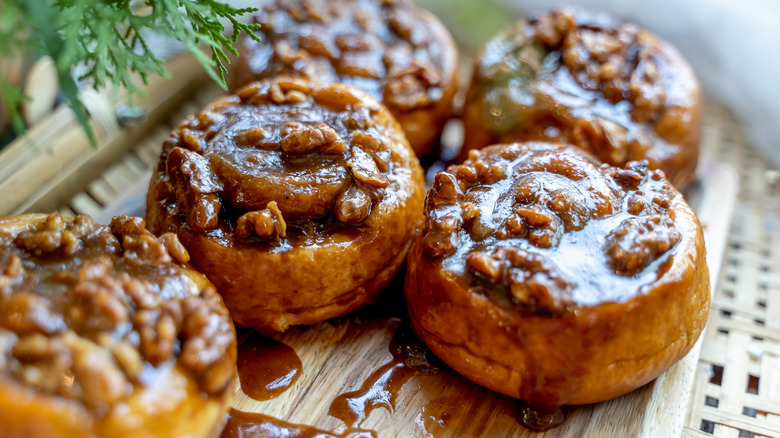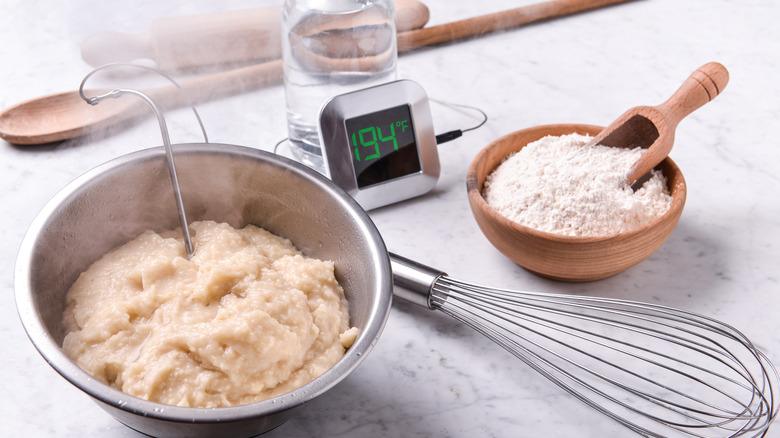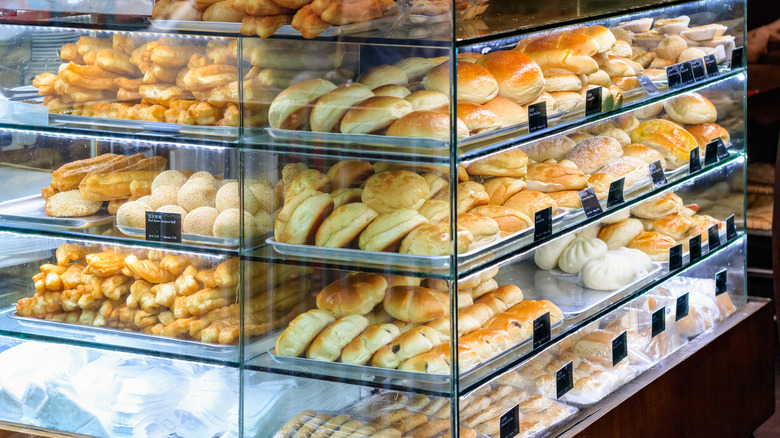The Tangzhong Tip For The Most Tender Sticky Buns
Sticky buns are a beloved snacktime treat for many folks with a sweet tooth. True to their name, they are buns, sticky with sugar, and ideally, moist and fluffy. These buns are best eaten soon after they are done baking to enjoy said fluffiness, as they can go stale and dry out when left on the counter for a while. How, then, can the light and airy texture of these buns be preserved, even days after they have been baked? There is a method that has been practiced in many East Asian bakeries for years, and that is the tangzhong method.
Even though there are many excellent recipes for sticky buns available, incorporating the tangzhong method is key for achieving and maintaining an ultra-tender crumb. So, what is the tangzhong method? It is the Chinese name for a technique where a portion of the flour in the bun's recipe is cooked with a high proportion of liquid over low heat — essentially creating a kind of roux, but without fat — which is then mixed with the rest of the flour and ingredients. This pre-cooked flour paste plays a significant role in the physics of the bun's starch (more on that in a bit), which keeps sticky buns tender for longer.
The science of tangzhong
What tangzhong does is pre-gelatinize the starch in the cooked flour so it can hold more water (about double), which then converts to steam during baking, distributing the extra moisture throughout the buns. When the sticky buns are done baking and left on the counter for folks to help themselves, the extra hydration ensures that it will take much longer for the buns to go stale.
This extended tenderness from tangzhong influences the quantity of another ingredient: fat. Fat is often added to doughs such as brioche in the form of butter or oil to add a flaky softness. Chef Herve Guillard of the Institute of Culinary Education ran experiments on standard Pullman loaves to gauge the effects of tangzhong (and its Japanese cousin, the yudane method used for milk bread) on their tenderness, and the tangzhong method resulted in the softest bread that lasted the longest. "Because the bread stays softer and rises higher from the get-go and has a longer shelf life, it allows you to reduce the fat content of the bread," he said, also citing the cost advantage of less butter. What this means for sticky buns is that you can use less butter in the dough for whatever reason you need to do so.
Other uses for tangzhong
Tangzhong is undoubtedly useful for sticky buns, and there are other applications for this cooked flour paste. It is essential for many East Asian baked goods, specifically Chinese bakery-style items. Think of pineapple buns, coconut buns, or sausage buns, where soft and squishy buns conceal sweet, creamy fillings or processed meat like frankfurter sausages.
King Arthur Baking explains that different dough recipes for bread and buns can be converted to include tangzhong, but only if that recipe benefits from additional softness and tenderness, like white sandwich bread and dinner rolls — so trying this with something like bagels would not be advisable! Taking into account the original recipe's hydration levels, the amount of liquid when cooking the flour paste can be calculated to achieve the desired amount of softness. King Arthur Baking recommends 75% hydration for the ideal tenderness. That means a recipe with 1 cup of milk or water and 3 cups of flour converts to 227g of liquid, divided by 361g of flour, which equals 63% hydration. To achieve the ideal 75% hydration, just add 44g more liquid. So, if you are a baking nerd who loves their kitchen scale, this is the perfect exercise to practice the tangzhong method in your sticky buns and beyond.


